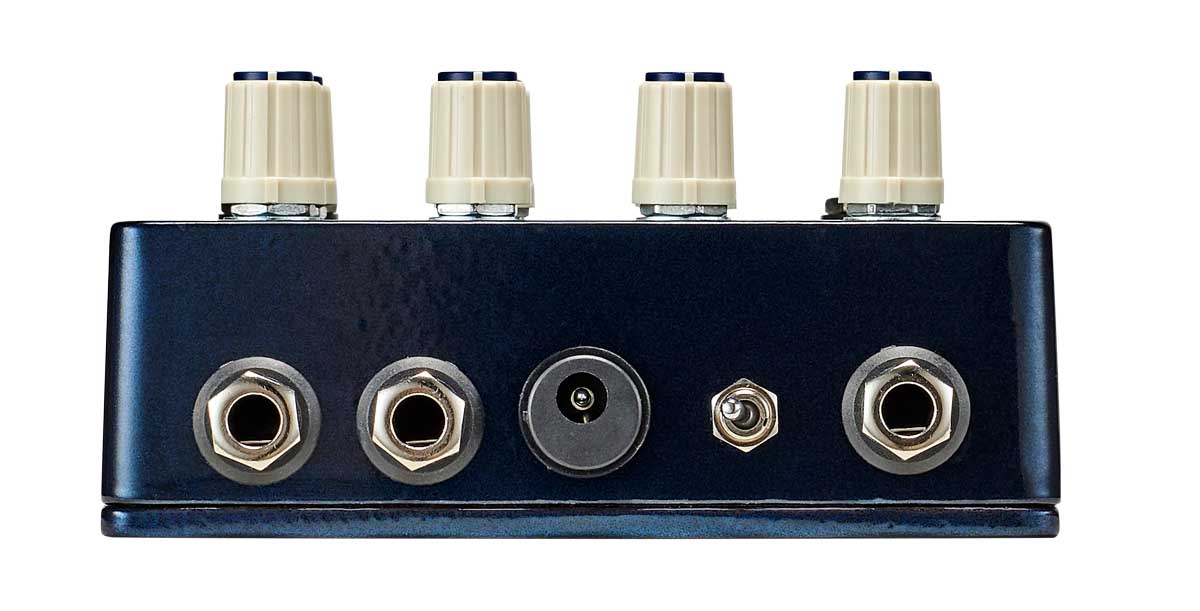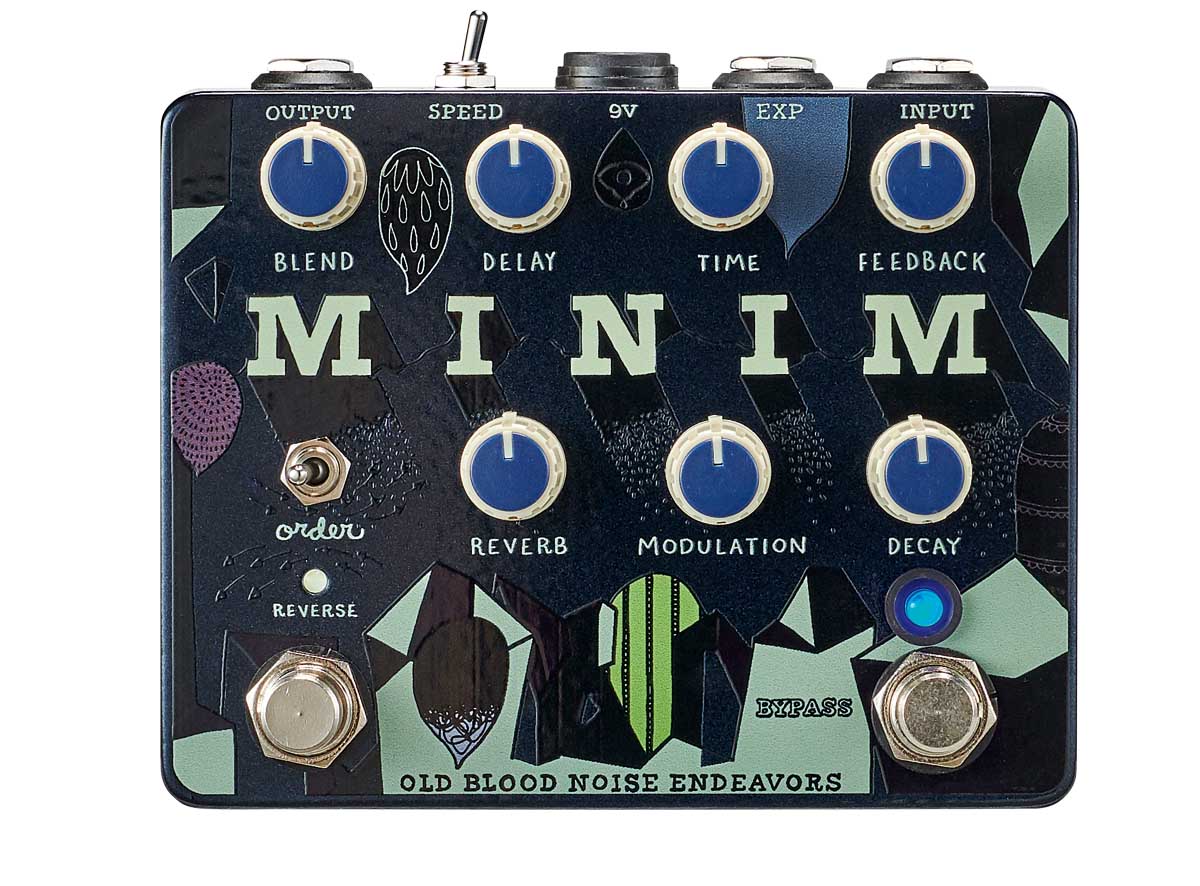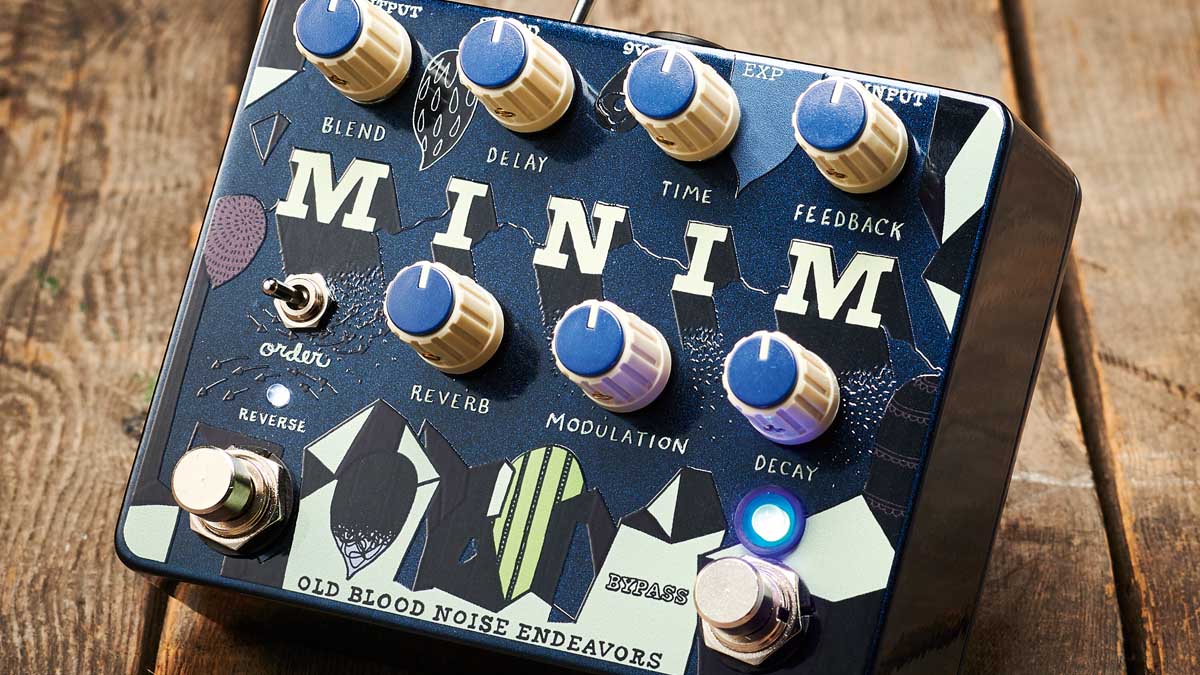Guitar World Verdict
The Old Blood Noise Endeavors Minim offers plenty of potential for off-piste sound exploration. It's for those looking for a more exotic flavour of delay/reverb, who relish tweaking in search of fresh ambience.
Pros
- +
Footswitchable backwards effect.
- +
Interesting take on reverb and delay.
- +
Unusual composite sounds.
- +
Easy hands-on operation.
Cons
- -
Delay/reverb cuts dead with bypass.
- -
No optional buffered trails mode.
You can trust Guitar World
Pedals specifically designed to create complex ambiences have become quite a thing of late – and the Old Blood Noise Endeavors Minim falls right into that category.
While some pedals weave their sonic tapestry simply via a combination of reverb and delay, the Minim goes further, adding reverse sounds to the mix. You get two effects blocks that run serially with a choice of which goes first.
One block features modulated delay and modulated reverb, the other (with a separate momentary or latching footswitch) offers the reverse effect.
Sounds
The Reverb knob does what you’d expect, adding in the effect all the way to a totally wet sound, while the Decay knob adjusts the length of its decay. By default, the reverb has harmonic tremolo applied to it with speed and depth simultaneously controlled by the Modulation knob.
Speed is continuously increased by turning the knob, but Depth is gradually decreased at the same time, so it starts off at its deepest and ends up at zero depth. This basically means no modulation, allowing you to use the pedal for a straight-sounding hall reverb.
Before that point is reached, though, the faster trem speeds add a lovely shimmer to the mix. The Delay knob dials in the amount of the delay effect on top of the dry sound, which is always present; the dry and delay sound are in equal balance at about two o’clock with repeats getting slightly louder than the dry sound beyond that.
The delay is constantly modulating, so at the minimum setting of the Time knob you get a pure chorus effect. That knob advances up to a maximum delay time of about 400ms, the modulation getting gradually deeper, with the detuning more noticeable at longer delay times.

A Feedback knob runs from a single repeat upwards to its maximum value of non-stop repeats that go on and on but never take off into self-oscillation. Feedback can also conjure up some metallic flanging and comb filtering effects at minimal delay times.
Between them, reverb and delay can combine to yield a vast range of ambient and rhythmic effects textured with rich modulation – and that’s before you even think about switching in the other block for the reverse side of the pedal, which takes your input signal and plays it back in reverse after a fixed time of around half a second.
The amount of the reversed sound is determined with a Blend knob that runs from a totally dry signal to a totally reversed one. Once you’ve got a balance between dry and reverse sounds that suits you, this is a great backwards guitar effect that you can really exploit with or without the reverb and delay.
If you want to get freakier, the secret weapon here is the rear-panel Speed switch that brings in a double-speed sound, repeating everything you play twice – at an octave higher. It’s perhaps not as immediately musical as the other speed but can add interest as a textural layer, especially as part of a larger construct with delay and reverb.

With its dedicated footswitch you can add the reverse effect to the delay/reverb whenever you need it or keep it engaged and switch the whole composite effect in and out with the bypass switch.
What we really liked is that the reverse footswitch has a momentary action so you can just bring in the reverse for as long as you hold it down – great for throwing a bit of backwards action into the middle of a solo, and there’s even more performance potential available as you can plug in an expression pedal for foot control of the Blend knob to feed in the amount of reversed sound, too.
With reverse and the ambient effects working together, there’s a world of floaty atmospheric pads and more to be explored with quite different outcomes dependent on the order of the effects blocks.
Verdict
The Minim is like a fantastic bag of tricks where you’re always going to pull something intriguing out. You should note that this is a specialised pedal, not a substitute for a standard reverb or delay pedal.
The Minim is more something that will complement those existing effects by adding in its altered ambiences, while the reverse side of things offers very playable backwards guitar stylings that can compete with some dedicated pedals that offer that same effect. Put it all together and you’ve got an inspirational pedal for anyone who enjoys a bit of sonic exploration.
Specs
- PRICE: $229 / £219
- ORIGIN: USA TYPE: Delay and reverb pedal
- FEATURES: True bypass, 400ms delay time, expression pedal control of Blend
- CONTROLS: Blend, Delay, Time, Feedback, Reverb, Modulation, Decay, Order switch, Speed switch, Reverse footswitch, Bypass footswitch
- CONNECTIONS: Standard input, standard output, EXP
- POWER: 9V DC adaptor, 159mA
- DIMENSIONS: 117 (w) x 92 (d) x 60mm (h)
- CONTACT: Old Blood Noise Endeavors
Trevor Curwen has played guitar for several decades – he's also mimed it on the UK's Top of the Pops. Much of his working life, though, has been spent behind the mixing desk, during which time he has built up a solid collection of the guitars, amps and pedals needed to cover just about any studio session. He writes pedal reviews for Guitarist and has contributed to Total Guitar, MusicRadar and Future Music among others.












